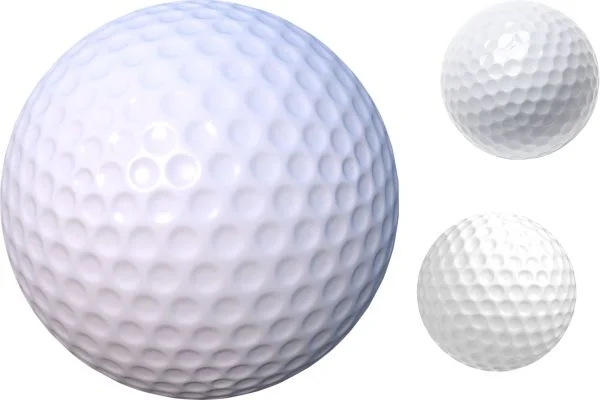When it comes to golf equipment, there’s no one-size-fits-all solution. Instead, the ideal equipment for your game depends on various factors, ranging from your skill level to the type of course you play. But when it comes to golf balls, finding the right fit is significant—after all. This is the piece of equipment that every golfer has in common. So read on if you’re wondering what golf ball should i use to best my game!
Different Types Of Golf Balls
When choosing a golf ball, there are three main types: two-piece balls, three-piece balls, and four-piece balls. Let’s discuss them in detail.

Two-Piece Golf Balls
The two-piece golf ball is the most common for its affordability and durability. Typically made out of synthetic rubber and plastic, these balls are designed for distance and durability with a maximum compression rating of around 90. As such, they tend to be considered better suited for beginners or mid-level players who don’t require as much spin or accuracy but still want a good-quality ball.
Three-Piece Golf Balls
Three-piece golf balls offer greater control than two-piece balls due to their increased spin rate when struck. In addition, they are typically composed of three layers—a solid core surrounded by rubber and covered in a more complicated, thinner outer layer called a “cover”—which gives them more control over their trajectory when hit off the tee or on approach shots. The spin rate from these balls gives them more control around greens and in bunkers, making them ideal for mid to low handicappers who need accuracy over distance.
Four-Piece Golf Balls
Four-piece models may be the way to go for maximum performance out of their golf balls. These balls feature an even softer inner core than three-piece models, along with two additional layers—an inner mantle layer and an outer cover layer—to provide even more spin and accuracy than three-piece models can offer.
Professional players often favor four-piece golf balls. Because they allow them to hit shots with pinpoint precision while also maximizing distance off the tee box or fairway wood.
Read More: How To Hit A Golf Ball For Beginners?
What Golf Ball Should I Use?
If you want to make a safe and simple choice, then a mid-priced, two-piece golf ball with a good reputation is a good option for most golfers. It offers a good balance between distance and control and can be used by a wide range of players with varying levels of skill. This is an option that is offered by a number of popular golf brands, including Titleist, Callaway, and TaylorMade. To make a more specific recommendation, it is important to take into consideration your skill level, swing speed, and preferences, as we mentioned earlier, so as to make a more precise recommendation.
What Golf Ball Should You Use | Choosing the Right Ball

Compression Ratings
The compression rating of a golf ball is a good indicator of how hard or soft it will feel when struck with a club. Generally speaking, higher compression balls are designed for players with faster swing speeds who want more distance off the tee. Conversely, lower compression balls are typically better suited for slower swing speeds as they offer more spin and control around the greens.
Dimple Pattern
The dimple pattern on a golf ball also plays a vital role in its performance characteristics. For example, the number and shape of dimples affect the aerodynamics of a golf ball, which in turn affects its trajectory, flight distance, and spin rate when hit with a club. Generally speaking, balls with fewer dimples will fly further than those with more dimples due to their higher launch angle and lower drag coefficient.
Durability
Durability is another crucial factor to consider when choosing a golf ball. Again, the material used in construction will determine how well the ball stands up over time and how much durability it retains after multiple shots. High-end balls often use softer materials such as urethane or rubber blends that provide a superior feel. But cost more money; lower-priced options may use more complex materials such as polyurethane or plastic that provide less feel but last longer over time.
Spin Rates
The spin rate determines how much backspin you get when striking the ball with your club. This can be especially useful when hitting approach shots since a higher spin rate will help slow down the ball as it approaches its target area. Therefore, if you’re looking for maximum control over your approach shots, look for a golf ball with a higher spin rate. Conversely, if you’re looking to maximize distance off the tee, look for a ball with a low spin rate.
Read More: How To Put Backspin On A Golf Ball?
Conclusion
We hope now you know what golf ball should i use. Choosing the right golf ball can be tricky—but if you understand your own game and consider factors such as compression ratings, dimple patterns, and durability. You’ll find the perfect fit for your needs and budget. Whether you’re looking for maximum distance off the tee or superior control around the greens. There’s sure to be a golf ball that meets all your requirements. So don’t hesitate to research before making your purchase!



